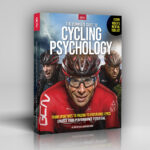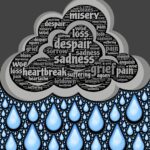In my last article, I introduced you to my concept of a “chamber of pain.” In this Part II, I will show you how to empty your emotional chamber of pain.
The only way to stop the toxic contents of your chamber of pain from contaminating your life forever is to empty it. At the same time, given the “nuclear” power of your chamber of pain, your considerable reluctance and downright resistance to such an idea is natural. But, though certainly not a pleasant experience, I can assure you from both professional and personal experience, that doing so will be cathartic and, ultimately, liberating.
As the saying goes, “there are many roads to Rome,” in other words, there are many ways to empty your chamber of pain. You can use meditation, group retreats, reading, talking with friends, or, perhaps most effectively and the road I recommend, is to engage a trained mental-health professional who can guide and support you through the emotionally challenging process of releasing your emotional pain.
Emptying your chamber of pain involves having the courage to open the chamber and allow all that pain that you have kept trapped inside for decades to pour out. This may seem like a truly terrifying endeavor given that you sequestered all that pain for so many years and certainly don’t want to feel that pain anew. You might think that the tsunami of “scalding” emotions that would pour out of your chamber of pain if you opened it would both burn your soul and drown your spirit.
Yet, the fear of the overwhelming volume and force of the emotions you would experience are very likely not nearly as extreme as you might think. Here’s why. You first created your emotional baggage when you were young out of necessity and without conscious choice; you were desperate to anesthetize your pain in any way possible. And you couldn’t have possibly known that your emotional baggage, which helped you for a while when you were young, would actually hold you back in so many aspects of your life as you transitioned into adulthood. You had neither the experience, insights, perspectives, emotional maturity, or tools to handle your difficult situation in a more productive and emotionally nourishing way. And without these qualities through which to filter your pain, you felt it like a blunt instrument to your head.
But who you were then is not who you are now. With decades of life experience behind you, you likely possess those attributes through which you can filter those painful childhood emotions in the present. As a result, when you open your chamber of pain and allow those emotions to flow out and through you, you feel the same emotions, whether sadness, anger, shame, guilt, or fear, but their volume is far lower, and so not nearly as painful nor as scary to feel. And in this cathartic experience is the realization that you no longer need to be driven by your emotional baggage for fear that the pain that came from it will be unbearable and perhaps even destroy you.
Another key part of this catharsis and letting to involves understanding where the emotions that you stored in your chamber of pain came from. In some cases, making this connection might be easy, for example, from your relationship with one of your parents or having been bullied as a child. In other cases, it might be more challenging, for instance, uncovering long-repressed memories from an abusive relationship. In either case, understanding the origin of the painful emotions can give you a greater sense of control over them (“Now I know why I am the way I am.”). It can help you assign responsibility to others rather than to yourself (“It wasn’t my fault!”). These insights can also enable you to separate who you were then from who you are now and disconnect those past emotions from your current life.
When you empty your chamber of pain, there are both short-term costs, but, thankfully, also long-term and long-lasting benefits. In the present, you will experience some emotional pain as you empty your chamber of pain and re-experience those childhood emotions that you have kept in your chamber for so long. Fortunately, as I just mentioned, these emotions aren’t nearly as painful as they were when you were young. There might also be some additional emotional pain (e.g., anger, sadness) as you acknowledge the causes of your emotional baggage (e.g., parents) that led to your creation of your chamber of pain.
But the long-term benefits will far outweigh the immediate costs. You will no longer need to live in a state of fear because what used to scare you is now just an unfortunate and sad memory rather than an emotional force in your life. You can better see yourself as who you are rather than who you were. Relatedly, you will be able to lead your life based on your deliberately chosen values, attitudes, and beliefs instead of those forced on you by others or those you adopted as a protective strategy when you were young. Because you will no longer need to defend yourself against perceived threats, you will engage with life, pursue your dreams, and connect with others in an open and welcoming way. You’ll be able to experience all the positive emotions that life has to offer because you will no longer need to shield yourself from negative emotions that are an inevitable part of life.
Lastly, when you empty your chamber of pain and free yourself from your fear of its contents, you will also be free yourself to live your life based on who you are rather than who you were. And you can finally pursue the life you want to live looking forward rather constantly looking over your shoulder out of fear that your past will catch up with you.






